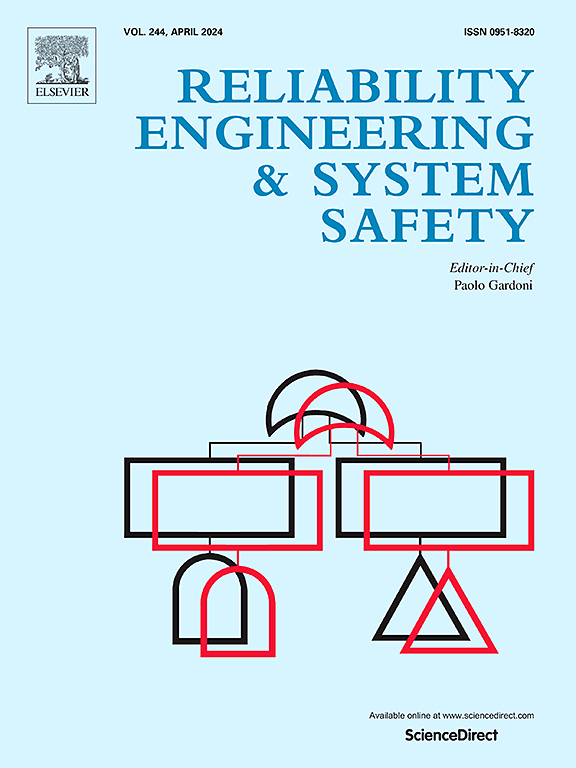考虑参数置信度和模型缺陷不确定性的区间贝叶斯惩罚网络砂质土地震液化预测新方法
IF 11
1区 工程技术
Q1 ENGINEERING, INDUSTRIAL
引用次数: 0
摘要
砂砾土地震液化预测是一个涉及多种不确定性因素的复杂系统问题。现有研究忽略了液化现场试验数据简化过程中引入的参数置信度不确定性以及模型不确定性中的模型缺陷。提出了一种新的区间贝叶斯惩罚网络(IBPN)方法。IBPN利用区间概率对数据简化后的整个临界液化土层的均值引入的参数不确定性进行表征,并通过引入风险敏感惩罚函数对液化预测中的假阴性和假阳性误差进行动态优化。通过与考虑不确定性的5种现有方法进行比较,结果表明,IBPN方法在同时解决了数据简化和预测误差带来的不确定性后,在预测精度方面明显优于其他算法。讨论表明,考虑参数不确定性比考虑模型缺陷对提高预测精度更为重要。此外,新的历史地震液化资料验证了IBPN方法的有效性和泛化能力。本研究不仅为砂砾土液化风险评估提供了更为准确的工具,而且为处理复杂不确定系统提供了新的研究思路。本文章由计算机程序翻译,如有差异,请以英文原文为准。
A new method of interval Bayesian penalized network for gravelly soil seismic liquefaction prediction considering parameter confidence and model flaws uncertainties
Seismic liquefaction prediction of gravelly soils is a complex systematic problem involving multiple uncertainties. Existing studies ignore the parameter confidence uncertainty introduced during the simplification of liquefaction field test data and the model flaws in the model uncertainty. This study proposes a new Interval Bayesian Penalty Network (IBPN) method. The IBPN characterizes, employing interval probabilities, the parameter uncertainty introduced by using the mean value to represent the whole critical liquefiable soil layer when the data are simplified, and subsequently dynamically optimize false negative and false positive errors in liquefaction predictions by introducing a risk-sensitive penalty function. By comparing with five existing methods, including those that consider the uncertainties, the results show that the IBPN method significantly outperforms the other algorithms in terms of prediction accuracy after simultaneously resolving the uncertainties caused by data simplification and prediction errors. The discussion revealed that considering parameter uncertainty is more important than consideration of model flaws for improving prediction accuracy. In addition, the validation of new historical seismic liquefaction data demonstrates the effectiveness and generalization ability of the IBPN method. This work not only provides a more accurate tool for gravelly soil liquefaction risk assessment but also suggests new research ideas for dealing with complex uncertain systems.
求助全文
通过发布文献求助,成功后即可免费获取论文全文。
去求助
来源期刊

Reliability Engineering & System Safety
管理科学-工程:工业
CiteScore
15.20
自引率
39.50%
发文量
621
审稿时长
67 days
期刊介绍:
Elsevier publishes Reliability Engineering & System Safety in association with the European Safety and Reliability Association and the Safety Engineering and Risk Analysis Division. The international journal is devoted to developing and applying methods to enhance the safety and reliability of complex technological systems, like nuclear power plants, chemical plants, hazardous waste facilities, space systems, offshore and maritime systems, transportation systems, constructed infrastructure, and manufacturing plants. The journal normally publishes only articles that involve the analysis of substantive problems related to the reliability of complex systems or present techniques and/or theoretical results that have a discernable relationship to the solution of such problems. An important aim is to balance academic material and practical applications.
 求助内容:
求助内容: 应助结果提醒方式:
应助结果提醒方式:


